If You Take a Mouse to School Story-related Science Pack For Preschoolers
Affiliate Disclosure: “This post contains affiliate links, which means I receive a small commission, at no extra cost to you, if you make a purchase using those links.”
I love using storybooks to teach, and one of my favorite ones to start the new school year is If You Take a Mouse to School by Laura Numeroff. This book is perfect for teaching different scientific concepts; this FREE science pack can help you.
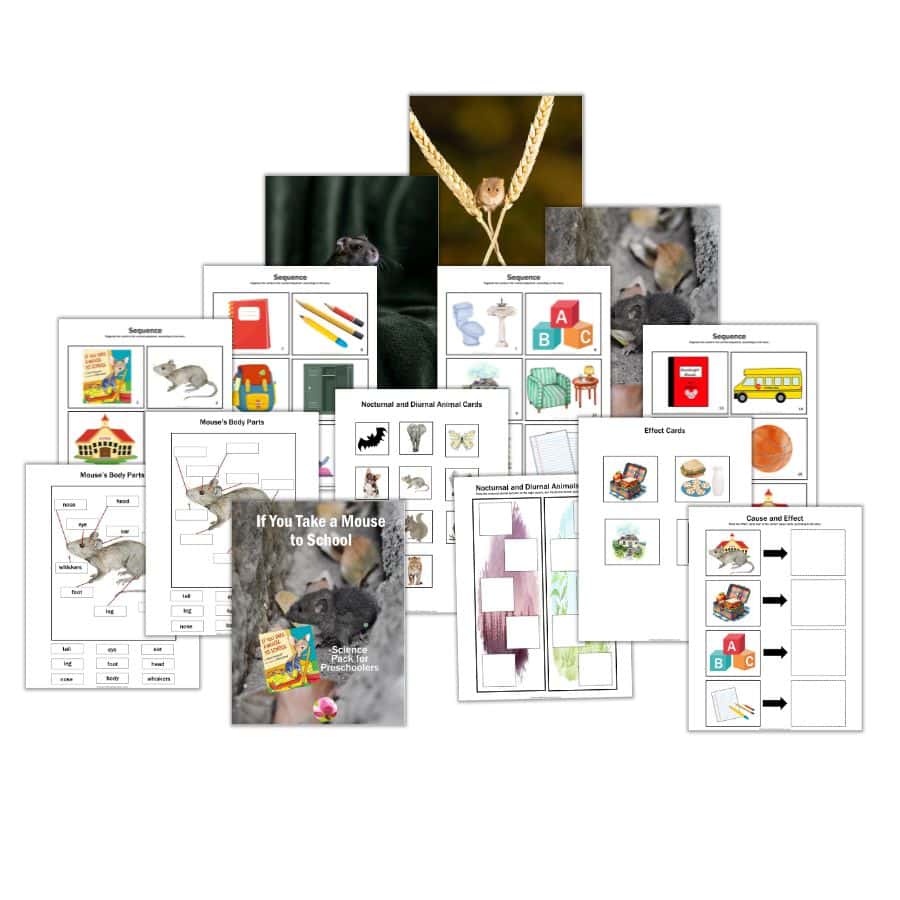
This science pack includes 17 pages and six activity sets. It is ready for download at the end of this post.
Teaching Science to Preschoolers
Children are naturally curious about the world around them, and we must take advantage of this curiosity to help them develop their scientific thinking in a fun and interactive way and use their senses as much as possible.
Learning science can help preschoolers develop many essential skills that will prepare them for school and also help them develop a lifelong eagerness to discover.
These skills include:
- Analytical and Critical Thinking – Students are encouraged to understand concepts like cause and effect, ask questions, investigate to find answers, understand why things happen, and observe and make sense of the world around them.
- Problem-solving – like Math, learning Science can help children plan, understand situations, and develop solutions.
- Communication and Language Development – preschoolers learn scientific vocabulary and communication skills to describe observations about different situations and natural phenomena and explain results they find verbally and in writing.
- Patience and Determination – Many scientific experiments require time or multiple tries, and the results can take time. Science helps children develop the patience to wait and the determination to keep trying until they get their answers.
- Gross and Fine Motor Skills – Investigations and research require developing these skills. For example, walking across a field to take pictures of an animal or observe a water body, gathering and putting together different materials to do an experiment, etc.
- Teamwork and Cooperation – many activities cannot be done alone; therefore, they need to learn how to work with other children harmoniously and help each other.
If You Take a Mouse to School Science Activities
You can do many science activities using this storybook as a base, and I wanted to mention some of the activities I like to use.
Teaching Facts About Mice
Show them a toy mouse and/or actual pictures. Ask them what they know about mice using a KWL chart (K = what they know; W = what they want to know, and L = what they learn).
Write down everything they know about mice in the K column and everything they want to know under the W column. At the end of the week, when you review what they learned about mice, write down the information in the L column). Keep it up to allow them to return to it, discuss the information, and ask questions about it.
These are some essential facts about mice you can teach your children:
- A mouse is a small mammal.
- It is also a rodent because its teeth never stop growing.
- Mice have a pointed snout and small rounded ears.
- Their tails can grow as long as their bodies, and they have very little hair.
- They are colorblind but have excellent hearing and sense of smell.
- Mice use their whiskers to sense temperature and to feel where they are walking.
- A mouse can squeeze through a hole the size of half a dime.
- Mice can be white, light brown, dark brown, silver, gray, black, or two colors.
- Mice are brilliant and can communicate with sounds, odor, body language, and facial expressions.
- Mice can transmit many dangerous diseases to humans or pets.
- Mice typically grow from 1 to 7 inches in length of their tail and weigh between 0.3 and 1.6 ounces.
- Wild mice can live in forests, grasslands, and very complex burrows.
- They can also live inside human-made structures.
- The mice are very clean and tidy.
- Mice learn and memorize the locations of food, pathways, and obstacles.
- Mice groom themselves several times a day.
- In the wild, mice are herbivores, but when they live in manmade structures, they are omnivores.
- Mice are usually nocturnal animals and sleep during the day.
- Mice are highly social and live in colonies or family groups.
- A group of mice is called a mischief.
- A female mouse is called a doe, a male mouse is called a buck, and babies are called pinkies or pups.
- One pair of mice and their offspring can produce up to 8,000 babies in one year.
- Baby mice are born small, hairless, blind, pink, and deaf. They do not open their eyes for the first couple of weeks. A baby mouse is fully developed and ready to forage independently within a month. Litters can contain up to 15 pups.
- Mice usually live about six months in the wild but up to two years in captivity.
- There are more than 30 known species of mice.
- Due to habitat loss, the Pacific Pocket Mouse is critically endangered, and the Salt Marsh Harvest mouse is also endangered.
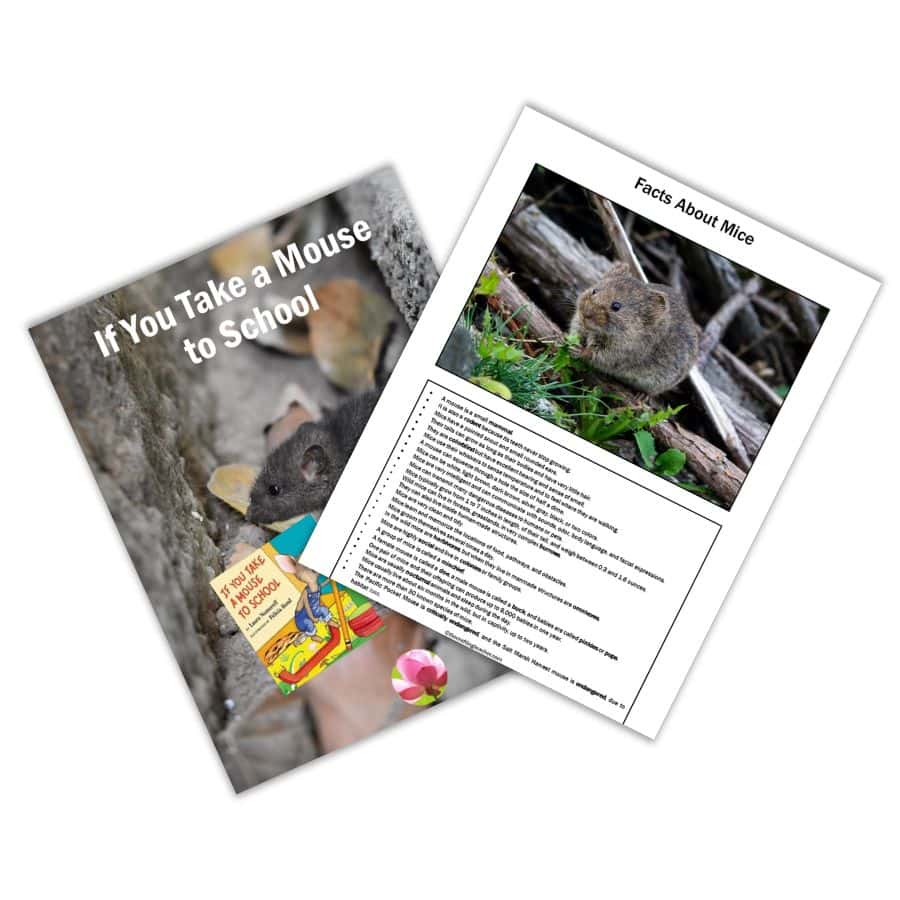
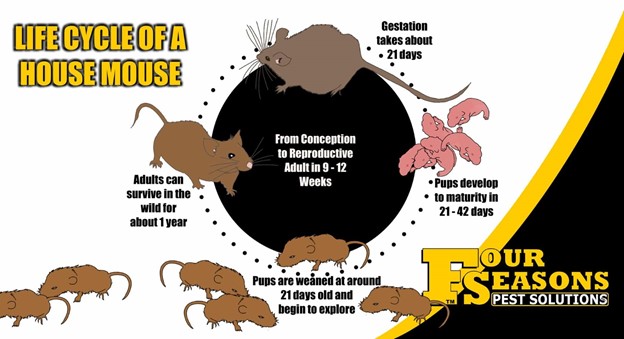
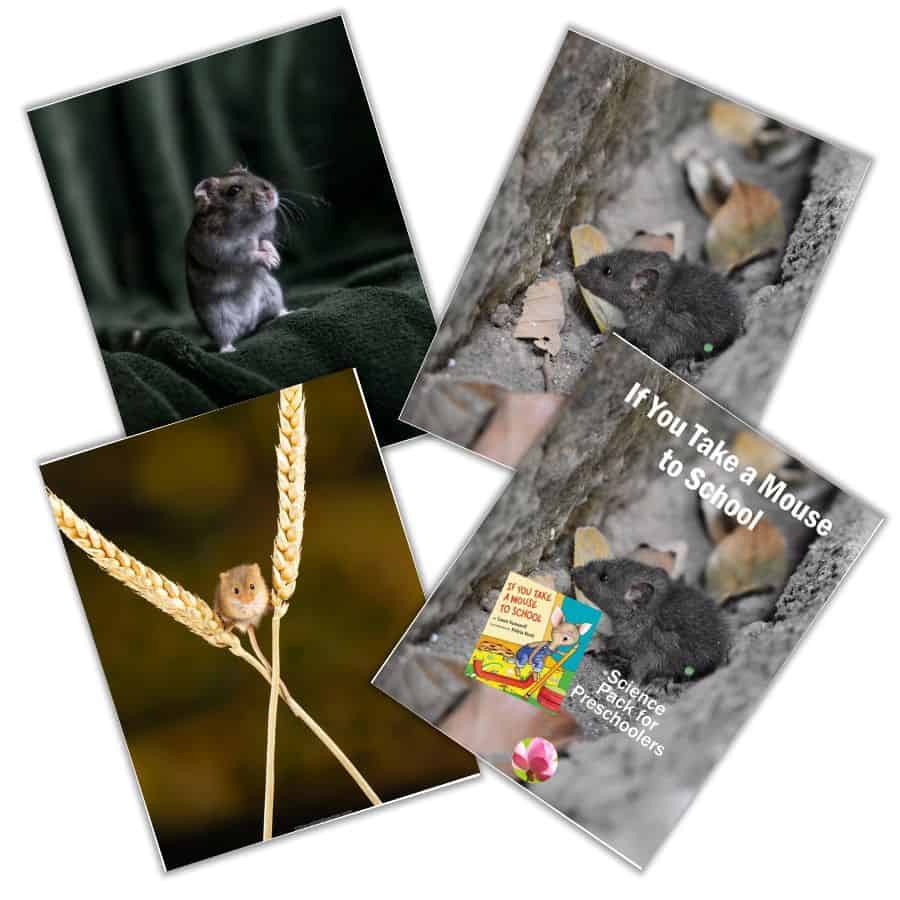
These engaging short videos from YouTube show mice facts very nicely.
Mouse Body Parts
This story allows you to teach your preschoolers the names and functions of the different parts of a mouse’s body, along with the most essential facts about this mammal. After you teach your children the names of the parts, you can use the activity sheets provided in the pack to have them match the names of the body parts.
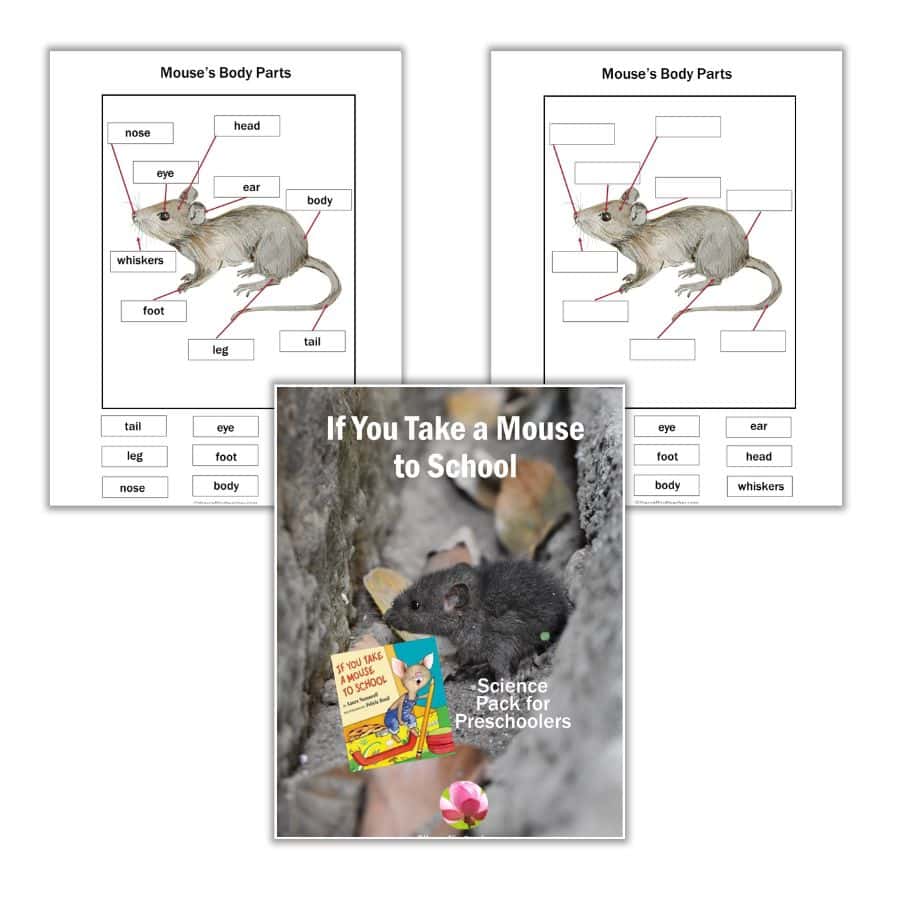
Print the pictures of the mouse in white cardstock, laminate them, and cut out the tags with the names of its body parts. If you want, you can add some Velcro to help the tags stay in the correct place. Teach the children the names of their body parts and what they are for. Children can practice matching the names of the body parts with the parts of the mouse.
Nocturnal and Diurnal Animals
Explain that nocturnal animals sleep during the day and are active at night, and diurnal animals are active during the day and sleep at night.
Both types of animals have unique physical characteristics that help them move and hunt, such as:
- Special eyes. Nocturnal animals have night vision. Their eyes get bigger, and their pupils widen, which helps them capture more light when it is dark, find prey, and avoid predators. Diurnal animals’ eyes have more cones that work better during the day and allow them to see in color.
- Some have exceptional hearing.
- Some have a fantastic sense of smell.
- Some use echolocation to fly at night, like bats.
Some nocturnal animals are mice, owls, raccoons, leopards, hares, mountain lions, bears, bats, bobcats, and foxes. Diurnal animals include butterflies, elephants, goats, cows, squirrels, sheep, dogs, gorillas, eagles, ducks, chickens, horses, and bees.
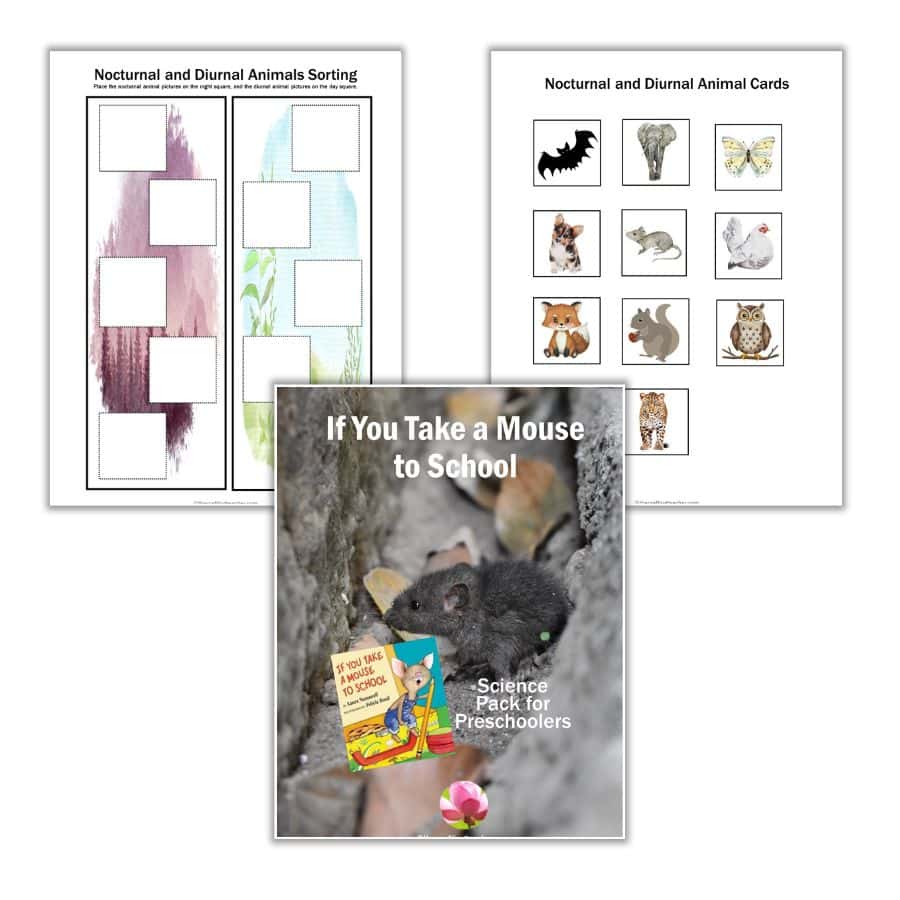
After reading the story and discussing what are nocturnal and diurnal animals and giving some examples, print the nocturnal and diurnal animals sheet and the animal cards sheet in white cardstock, laminate them, cut out the animal cards, and invite your children to place the nocturnal animals in the rectangle that represents the night, and the diurnal animals in the one that represents the day.
Cause and Effect
Cause and effect is the relationship between a situation or event and the effect or consequence that it produces.
If You Take a Mouse to School story allows you to teach cause and effect to your children because the entire story is based on different situations that cause an effect. For example, taking a mouse to school (cause) produces that he wants to use the lunchbox (effect). Using the lunchbox (cause) will cause the mouse to want to prepare a sandwich (effect).
List all the causes and effects that happen in this story, and when you read it to your children, don’t forget to point out the use of specific words in the book related to cause and effect and encourage your preschoolers to use them when they recall the story.
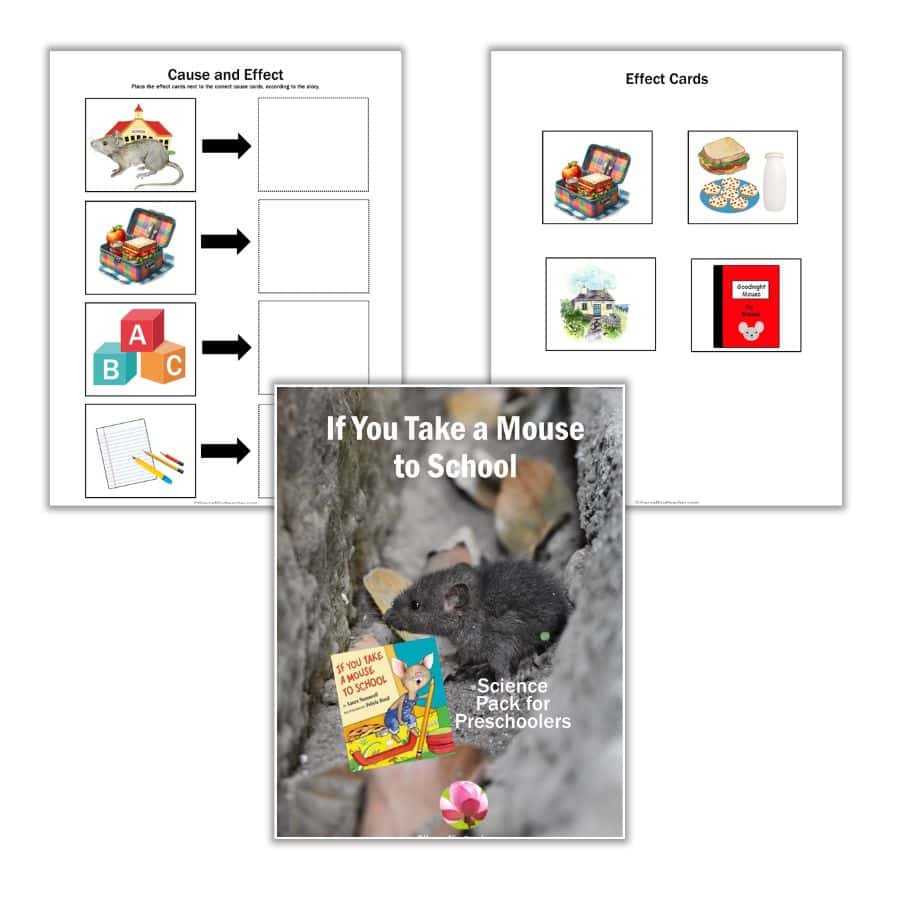
After reading the story and discussing the cause and effect situations that happen, print the cause and effect sheet and the effect cards sheet in white cardstock, laminate them, cut out the effect cards, and invite your children to place them next to the correct cause picture in the cause and effect sheet.
Sequencing
Sequencing is organizing actions, thoughts, etc., in a specific order. Developing this ability provides children with the foundation for reading, understanding science, and recognizing patterns that occur in their everyday lives.
Regarding science, learning sequencing allows children to organize and retell events or tasks logically, make predictions, approach a task or situation using logical and critical thinking, and know when a task is completed.
This story provides a chance to talk about the sequence of events using the cards included in the pack, which have pictures on them to represent different parts of the story. It will help your children participate in scientific exploration and discovery. It will also help them build reading, writing, and mathematical skills, tying different domains together.
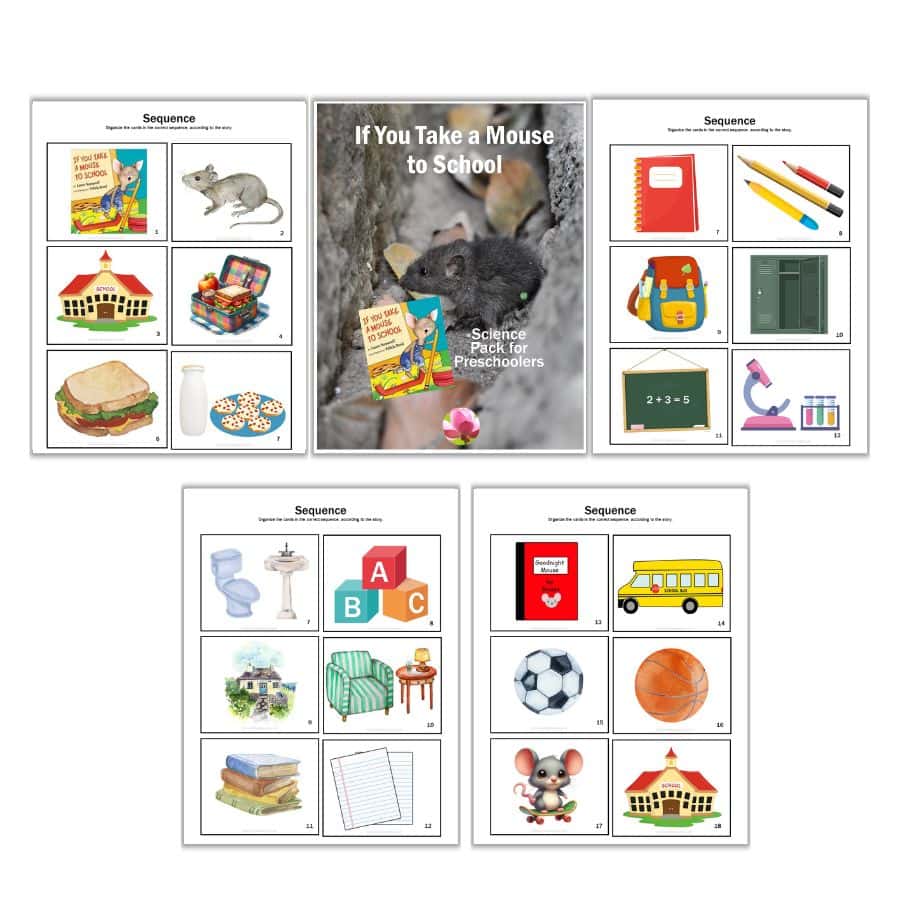
To do this, you can print the sequence sheets in white cardstock, laminate them, cut them out, and place them in a basket. After reading the story, you can:
- Use them to teach ordinal numbers (1st, 2nd, 3rd, etc.)
- Glue them to popsicle sticks, and give one card to each of your children. That way, you can use them during Circle Time to recall the story, inviting your children to use their cards to represent the different scenes in order.
- You can also set up a small group activity providing your children with all the cards or different sets and asking them to organize them in the correct sequence, according to the story.
Pin It For Later
If you are in a rush and don’t have time to read the post and download the printable but want to save it, pin it to one of your Pinterest boards for later.
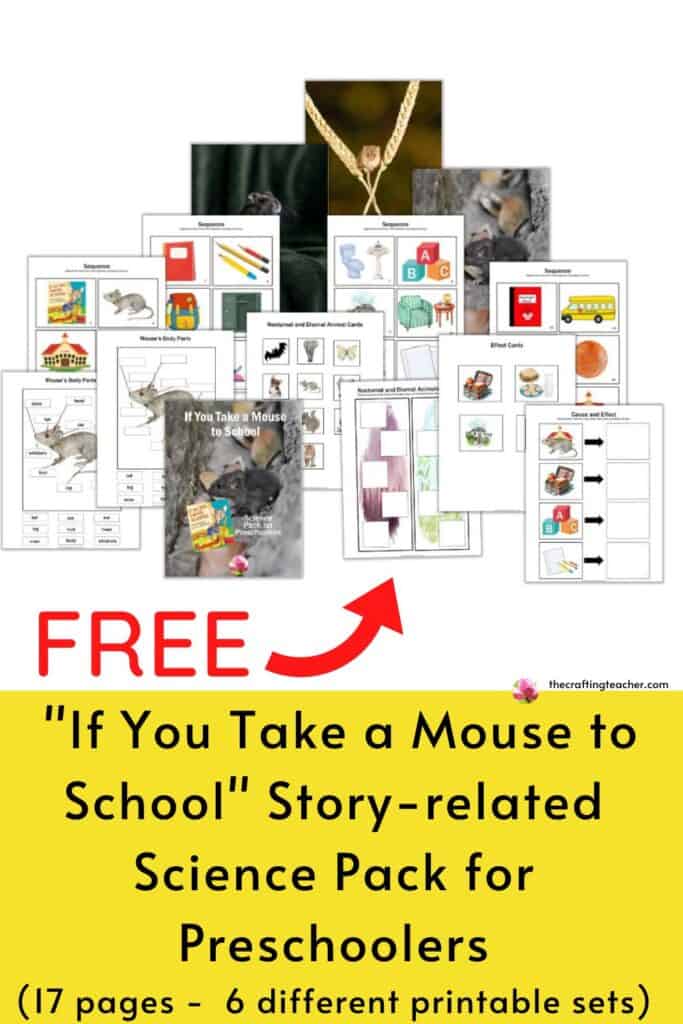
Remember to download the If You Take a Mouse to School Science Pack. Just click the button below and type your information to download it immediately.
You can use these ideas by themselves, but I will invite you to combine them with the literacy and math activities I created for this fun story, If You Take a Mouse to School, to take advantage of the opportunity this book offers.
Be happy, safe, and creative. I wish you well.
Love,

P.D. Please let me know if these ideas worked for you or if you think I need to add or replace something. My goal is to help you in any way I can.

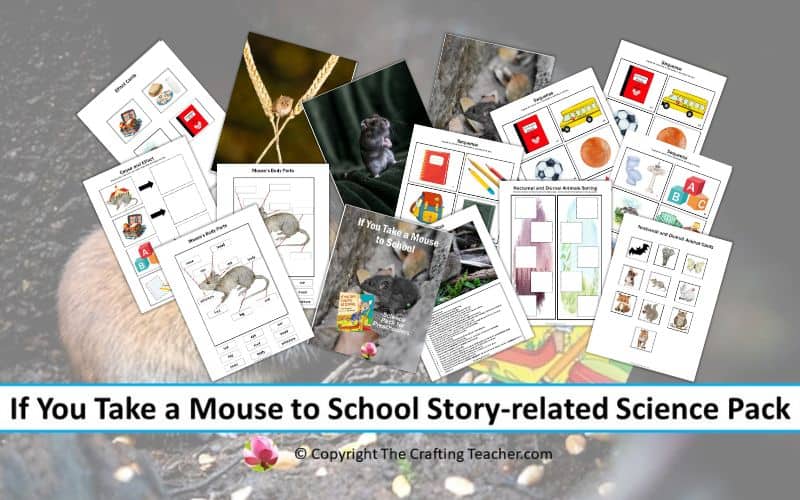
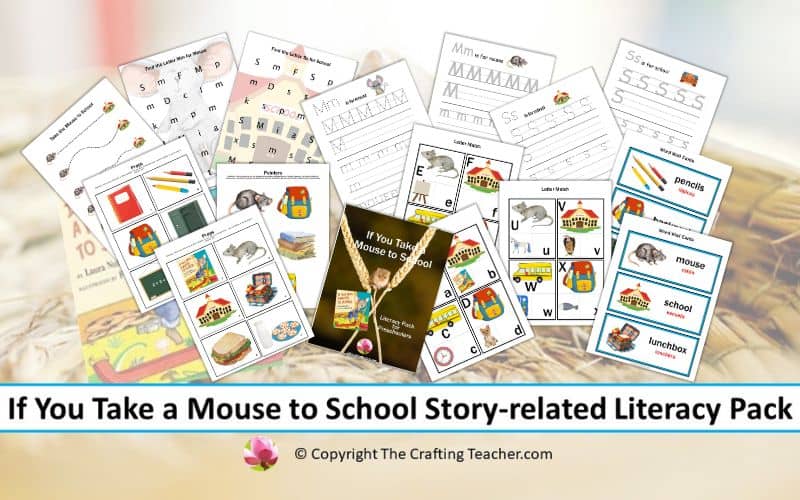
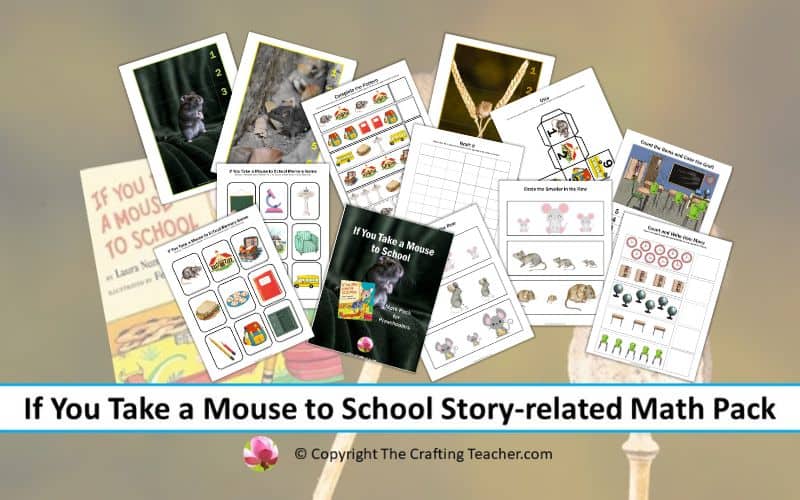
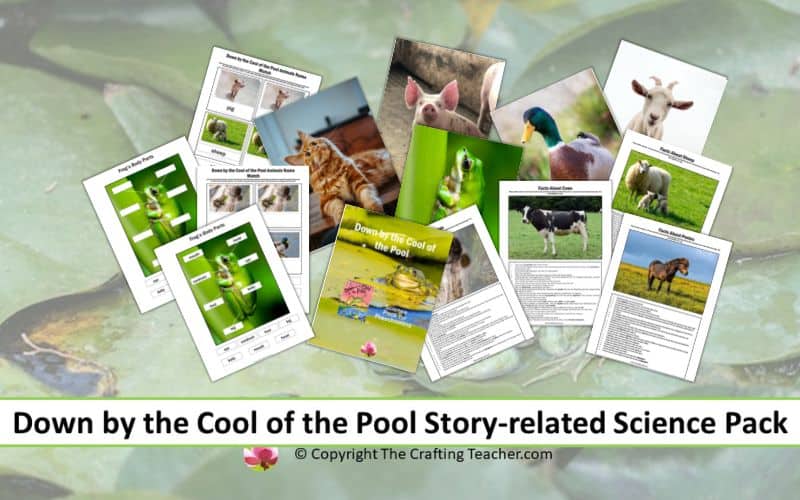
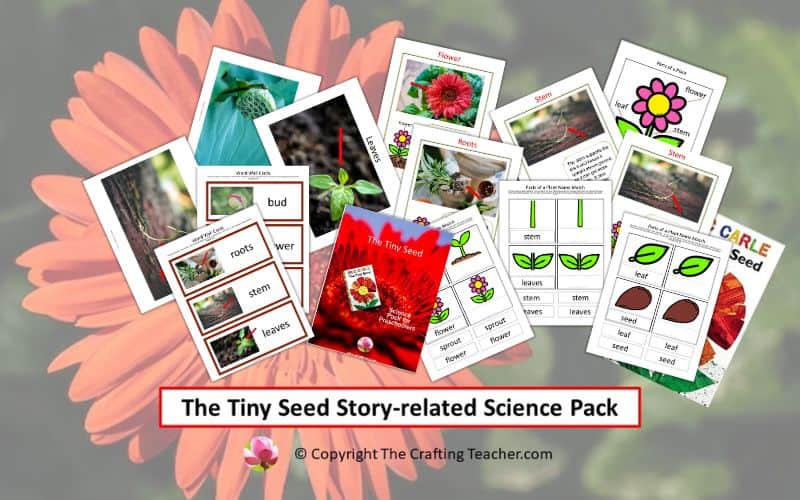
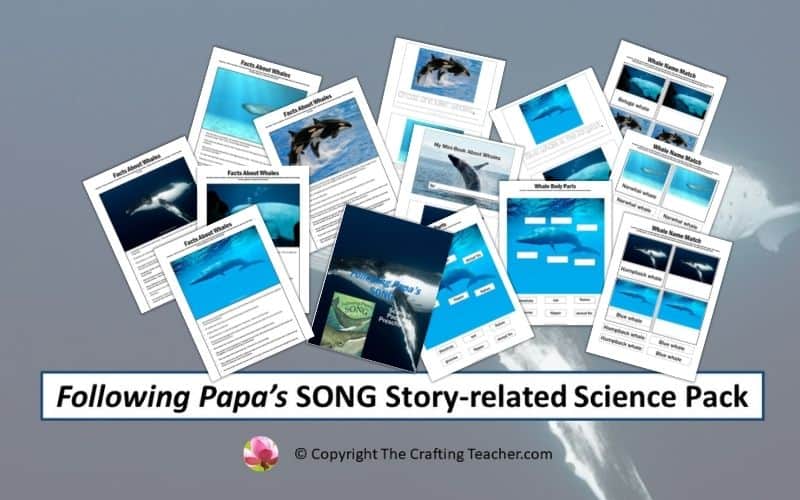
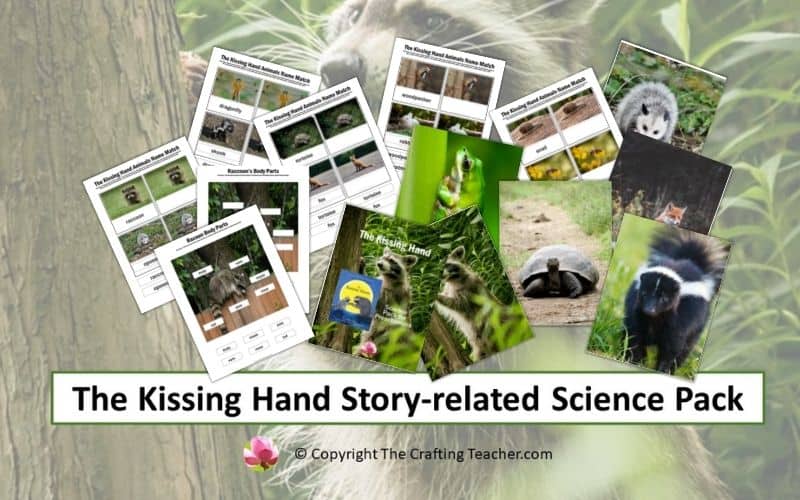
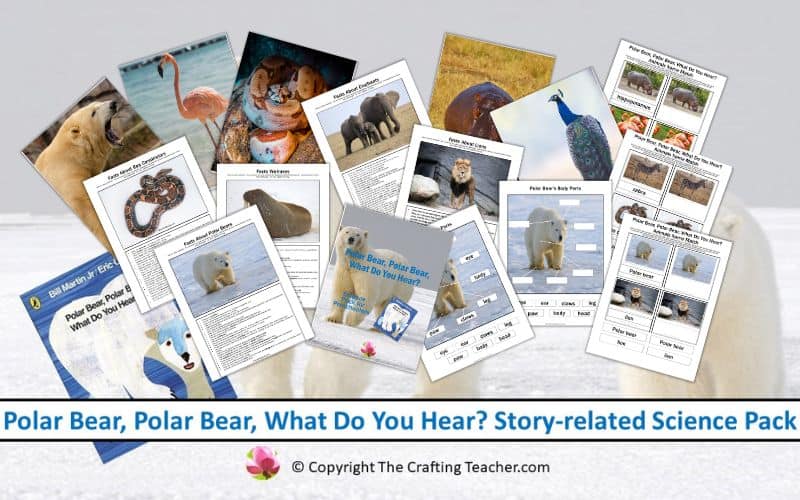
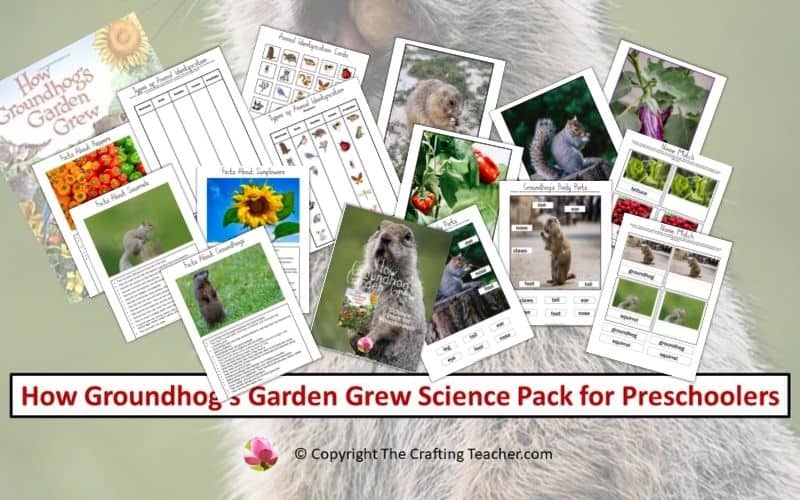
This sounds so fun. I am going to do it with my Pre-K kids before they go to K. Then in August when I move to 3’s I will do it with them too.
I’m glad you like it, and I hope your kids learn while having fun.